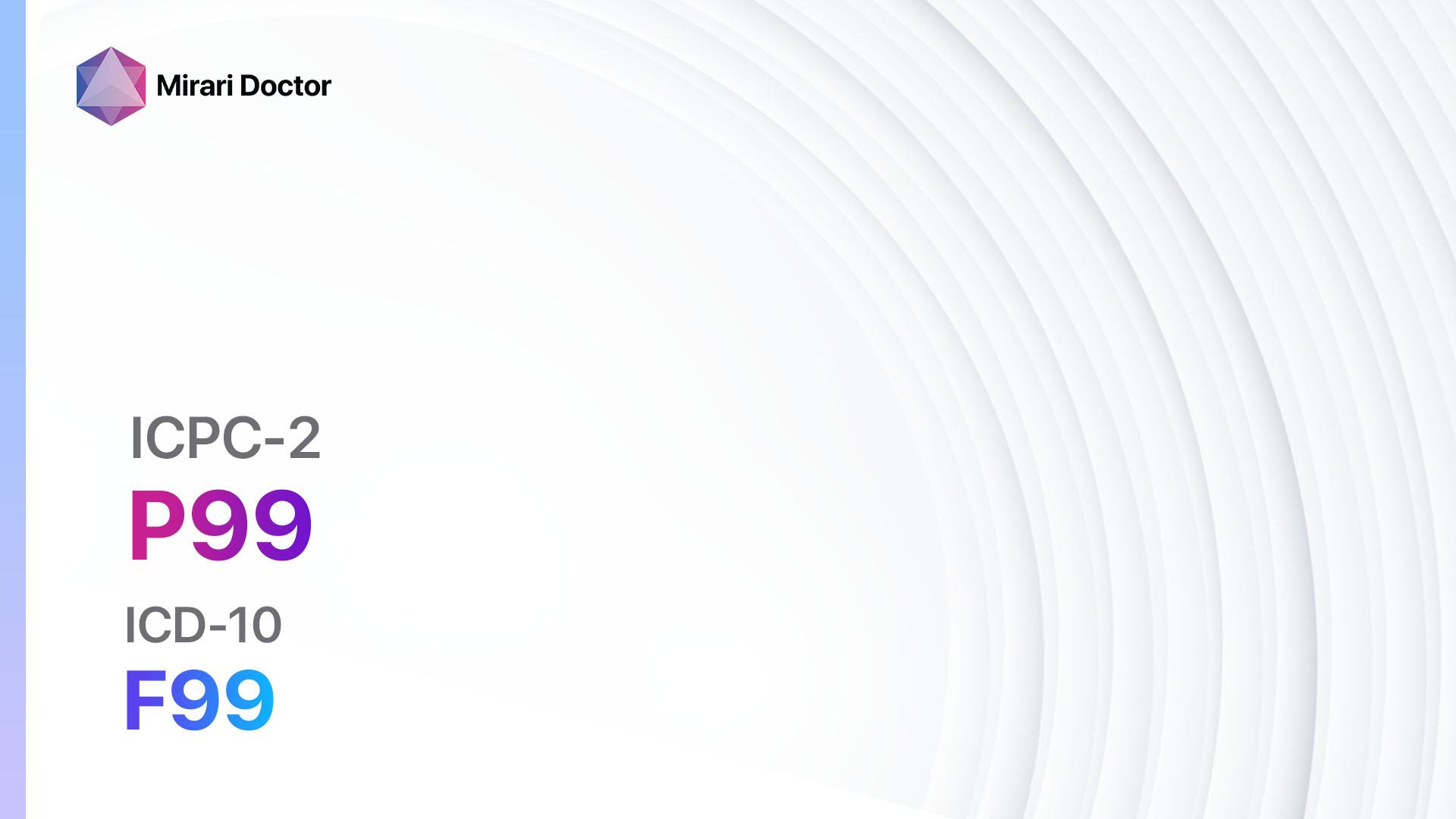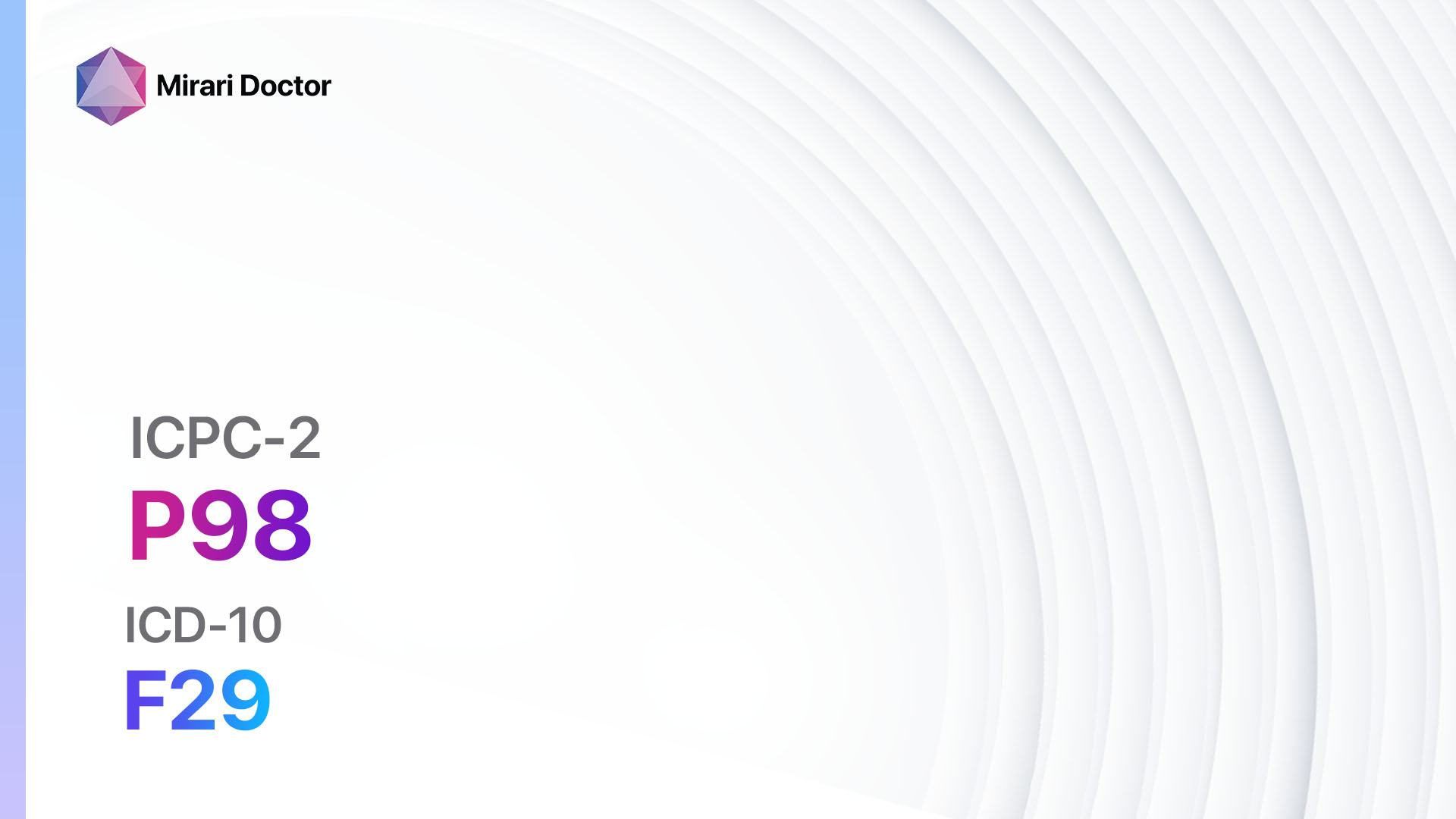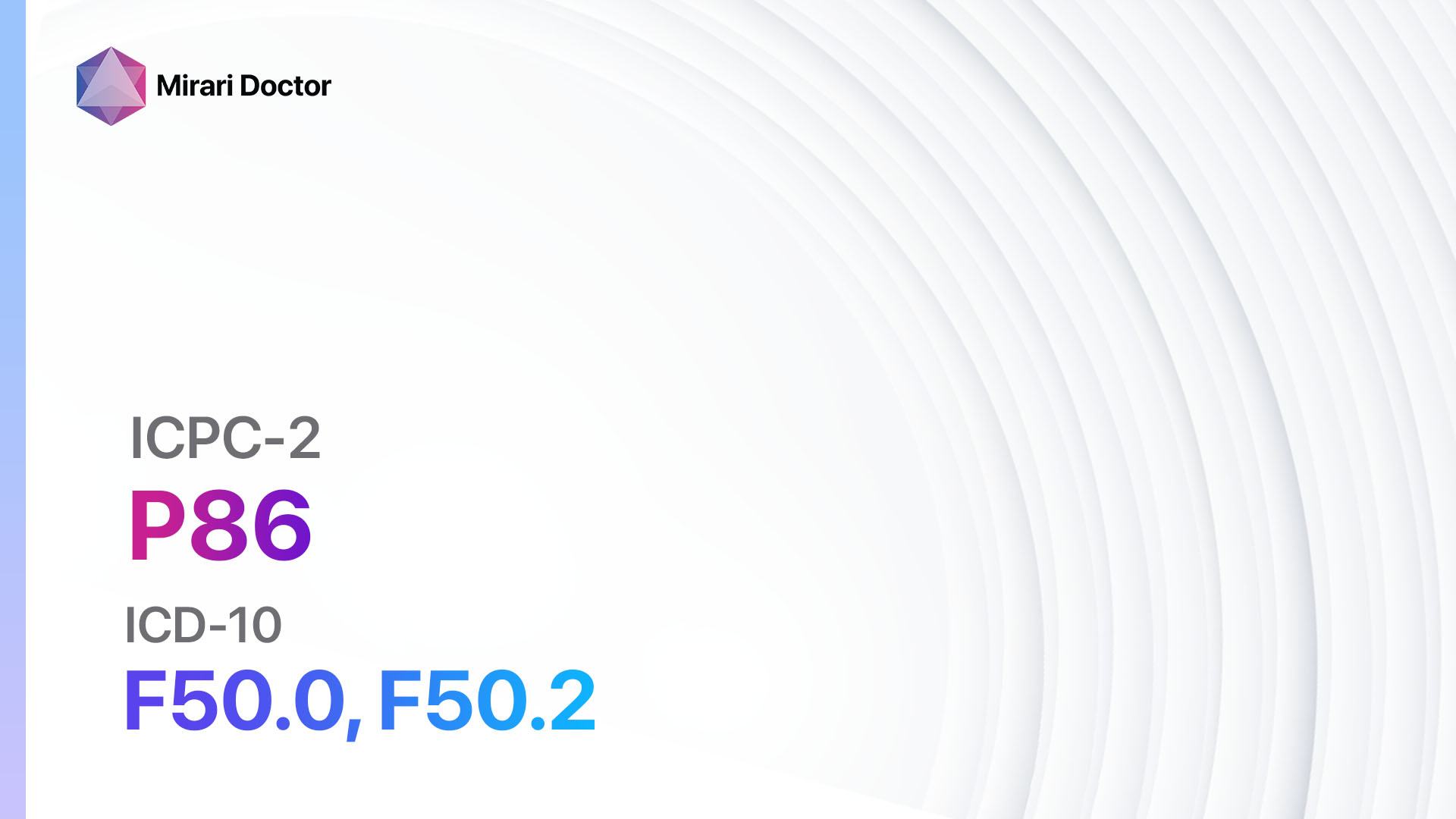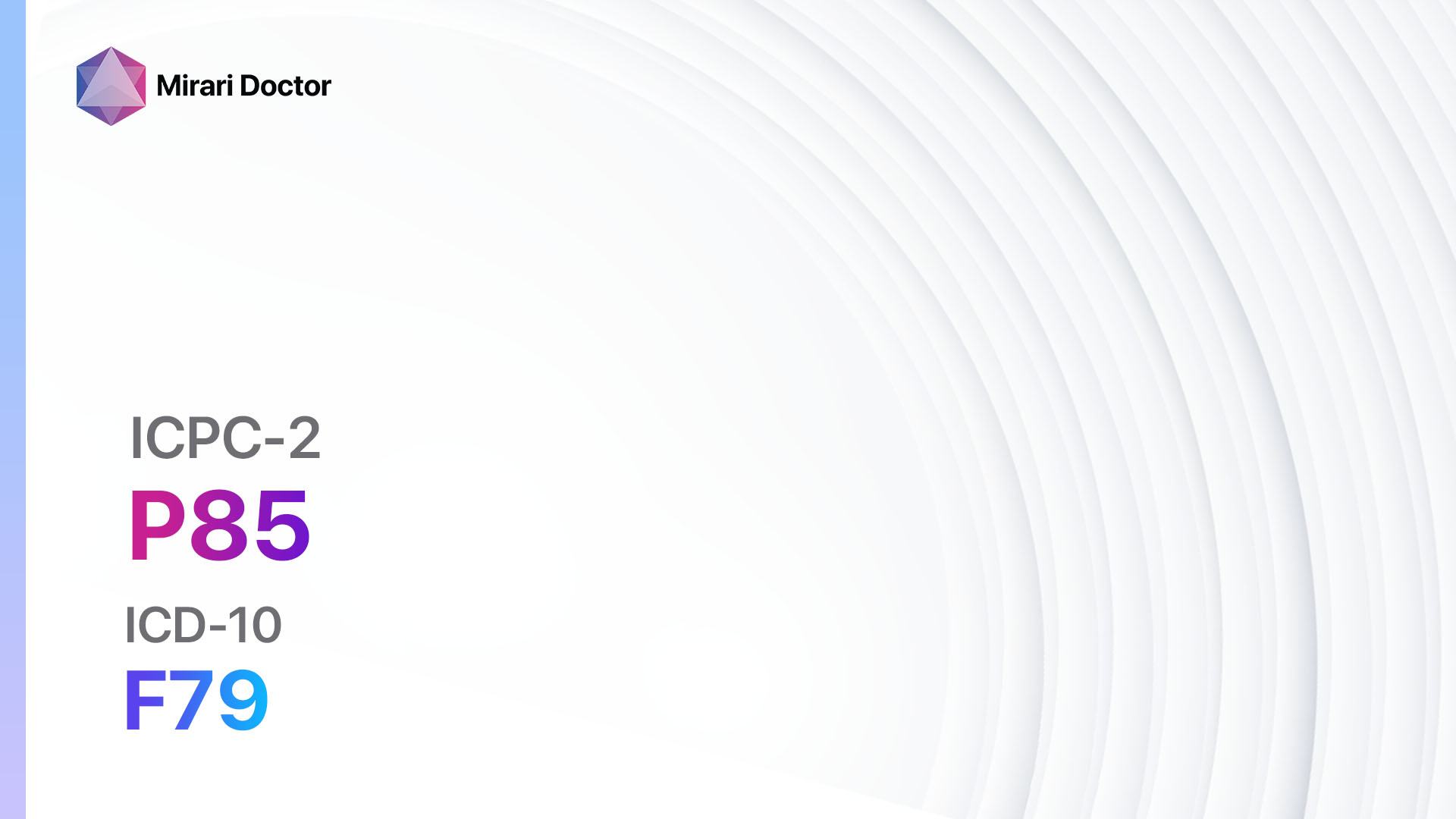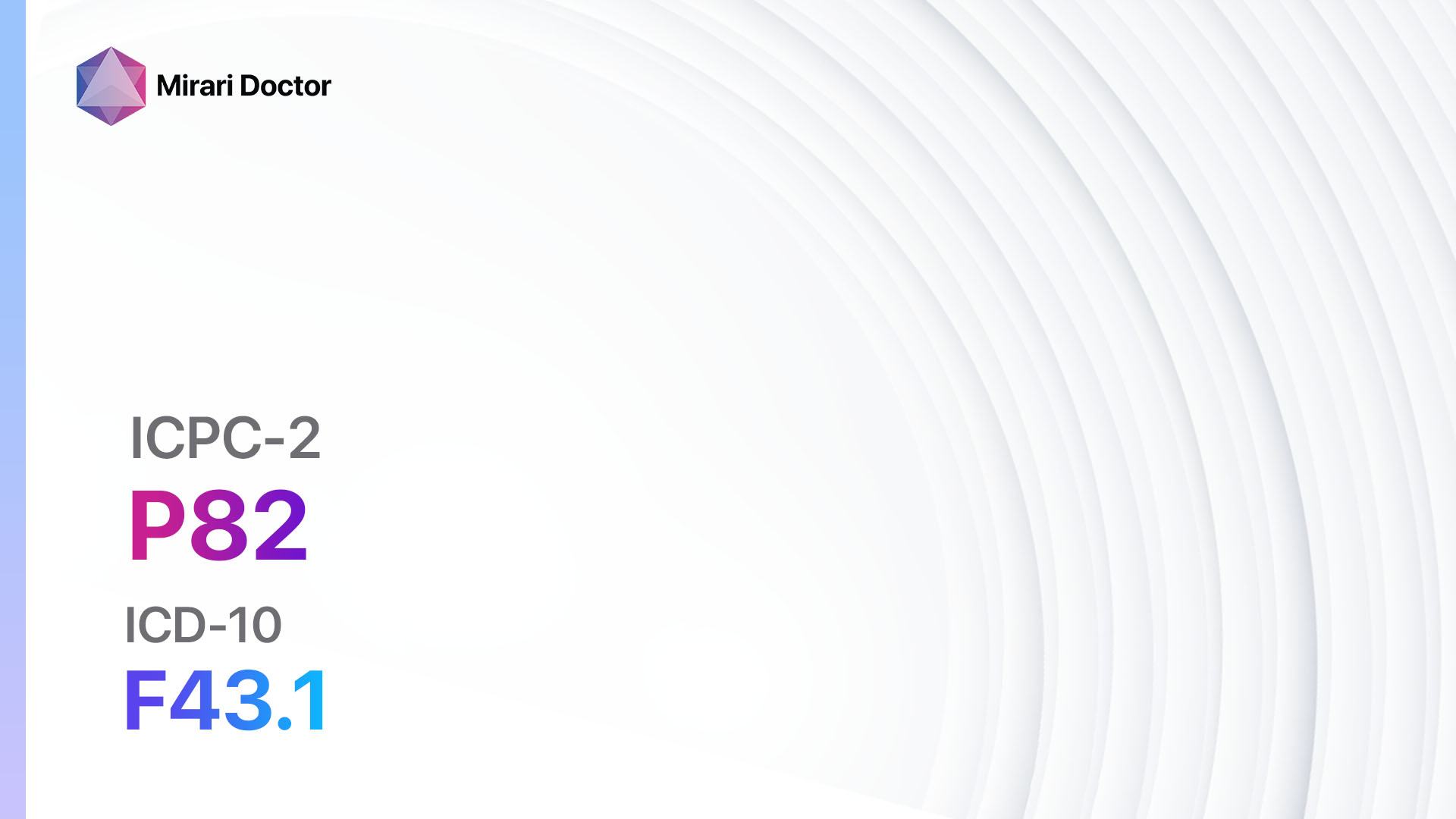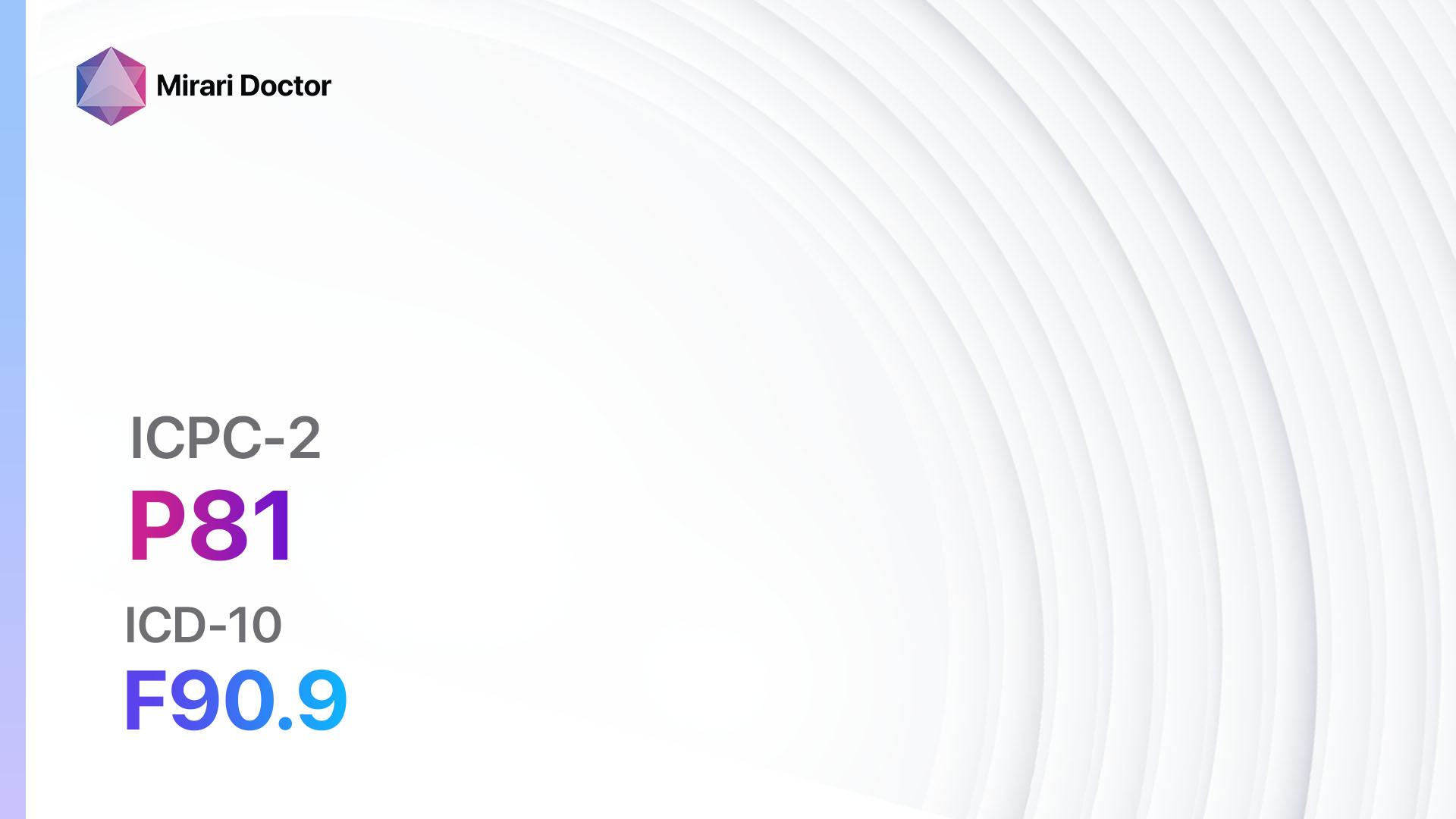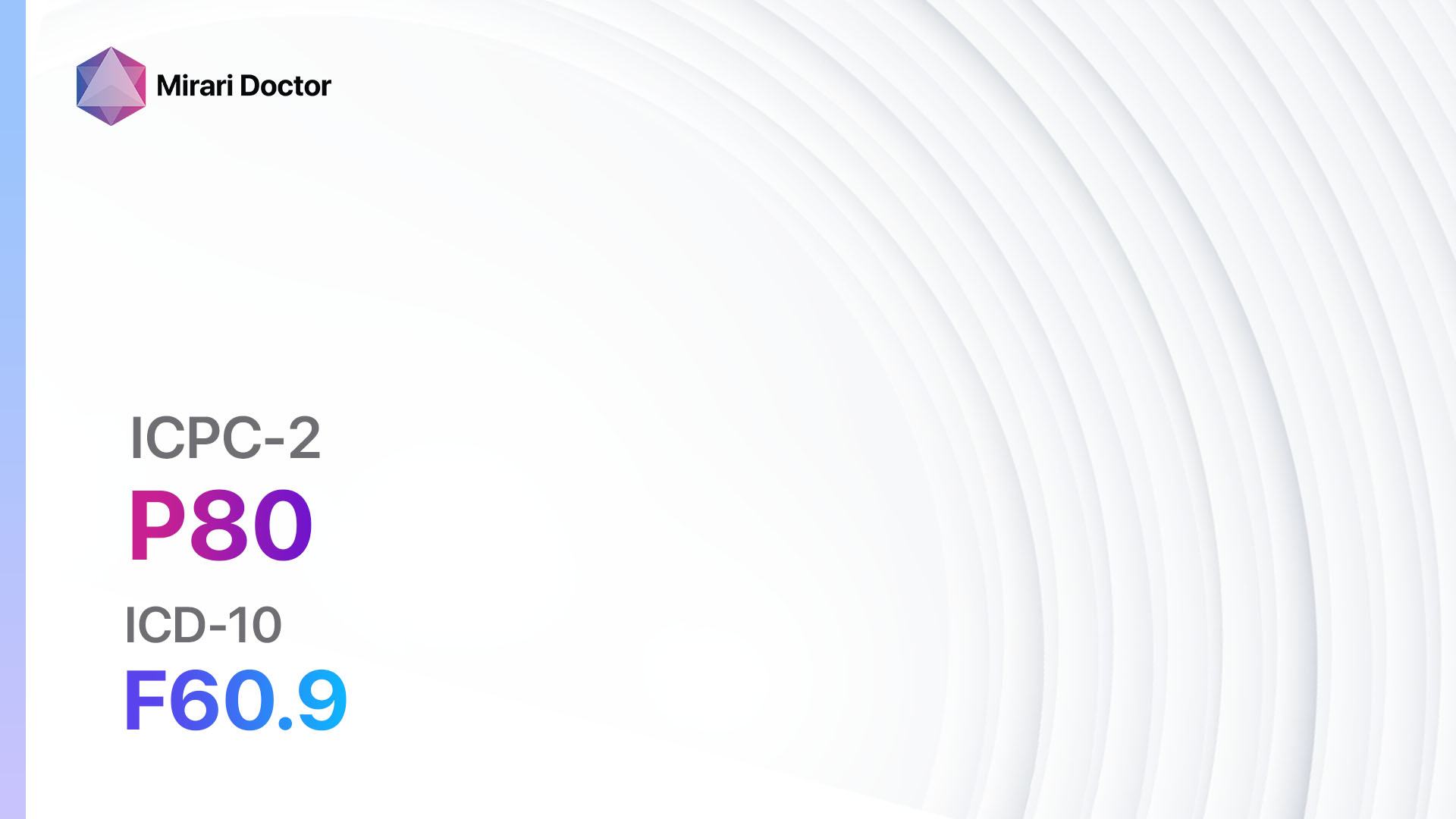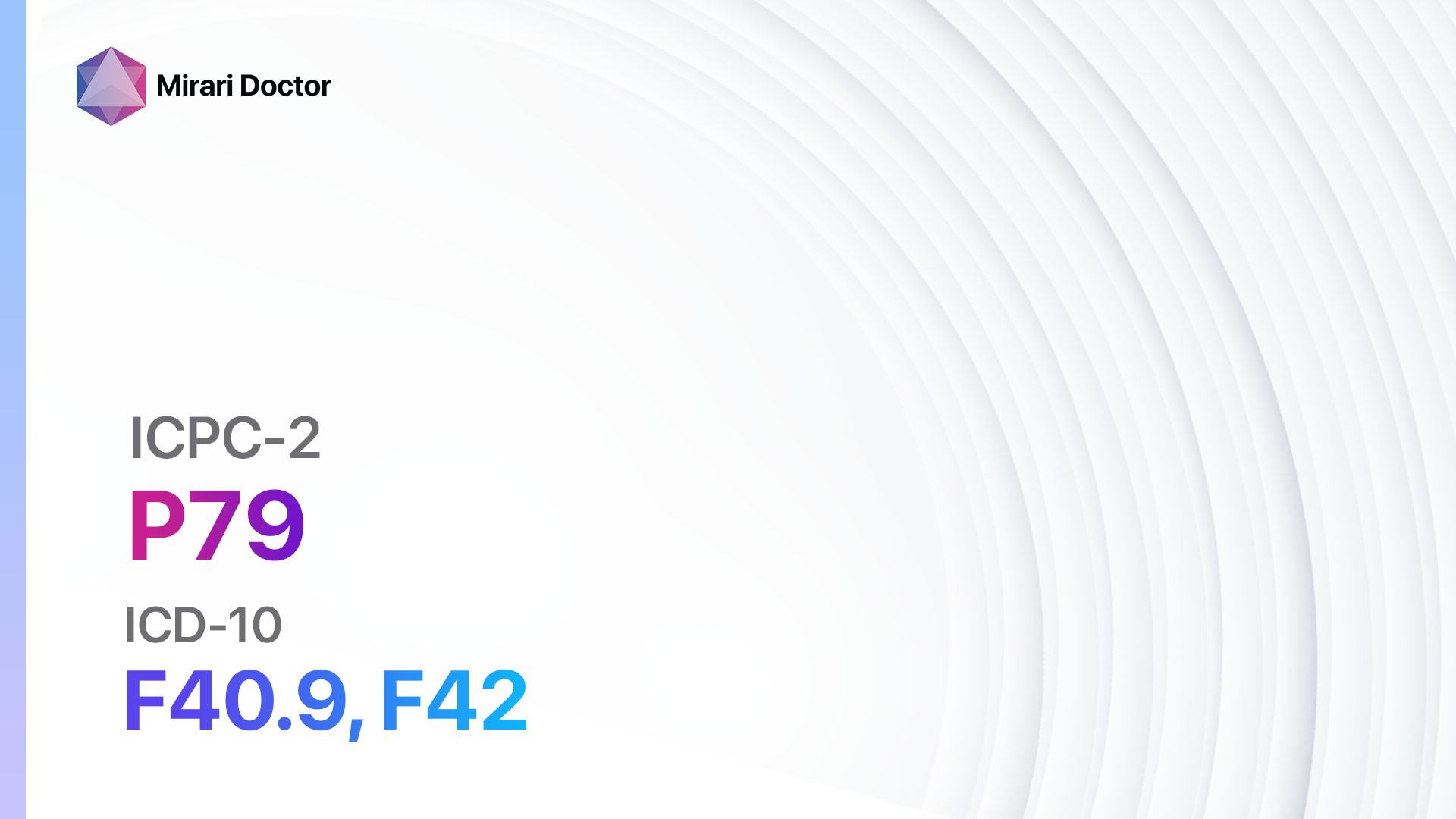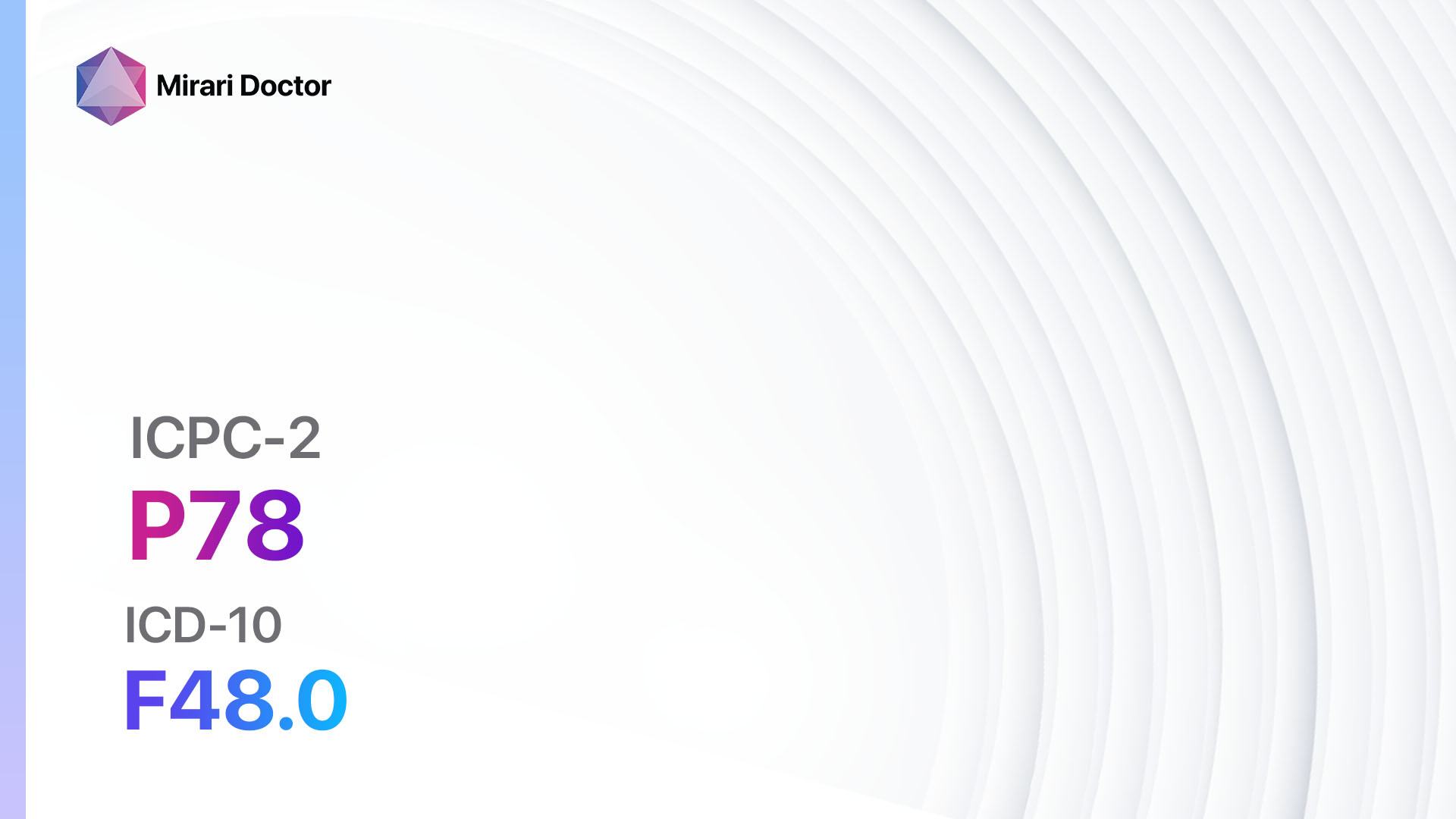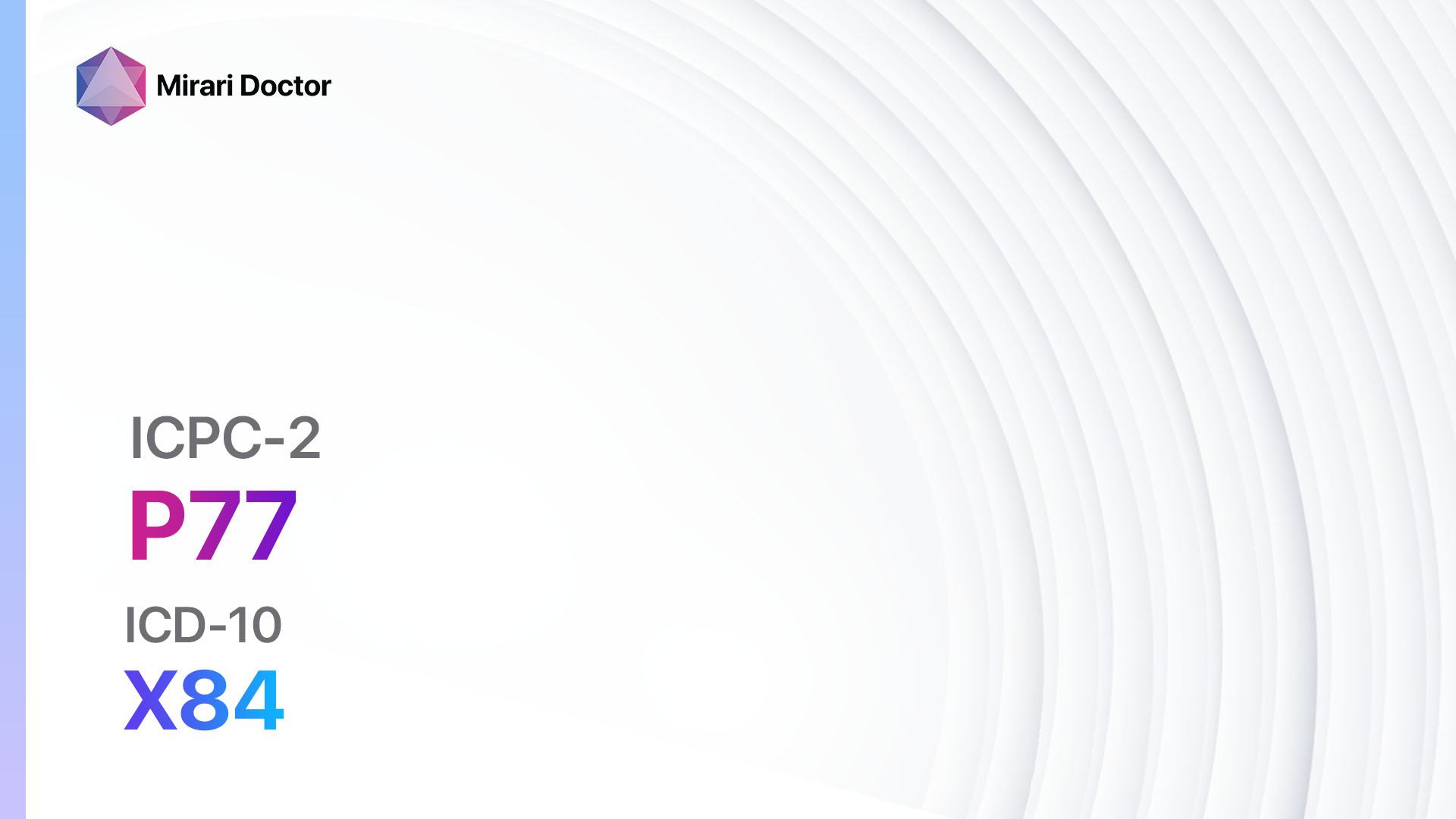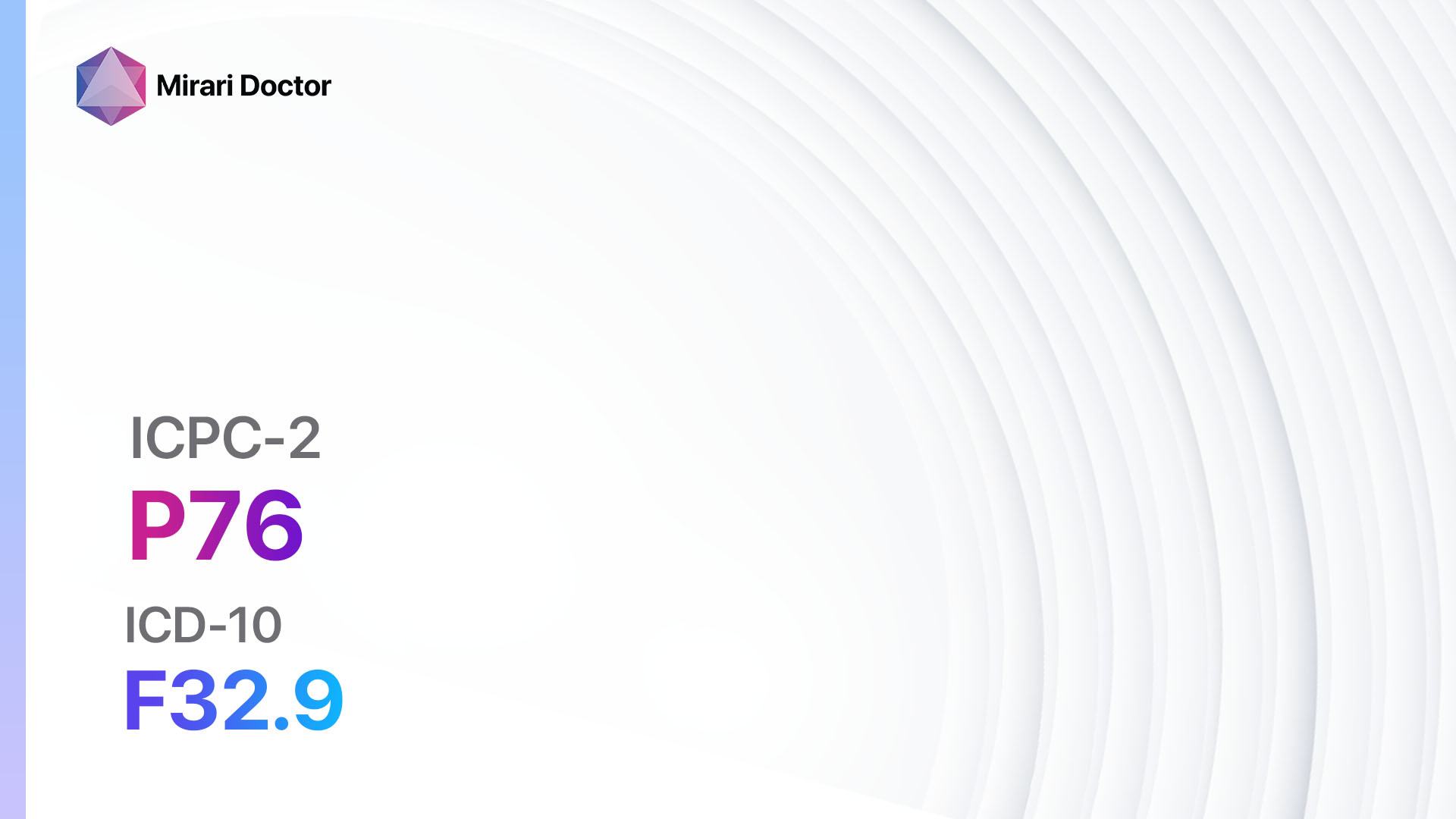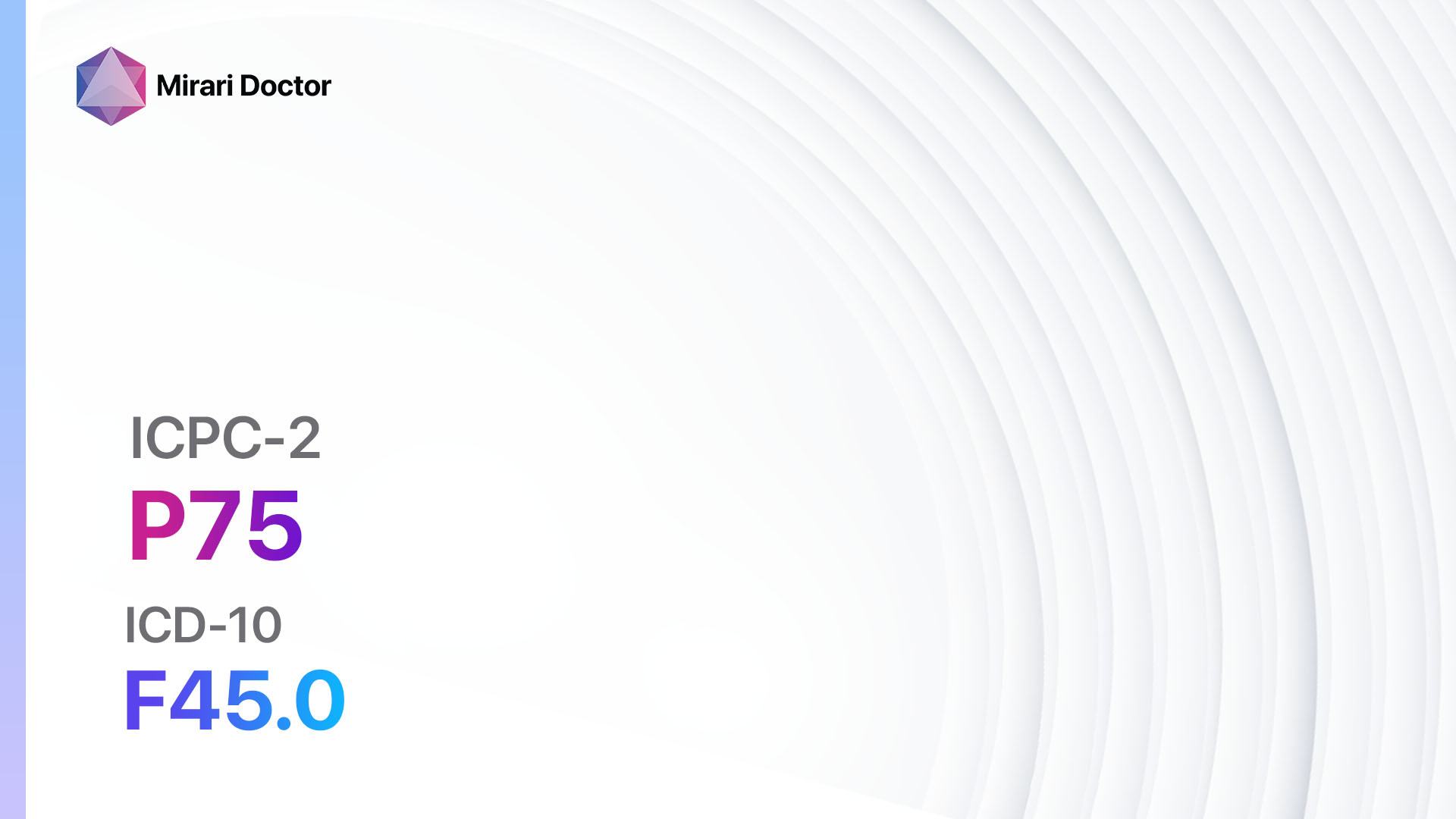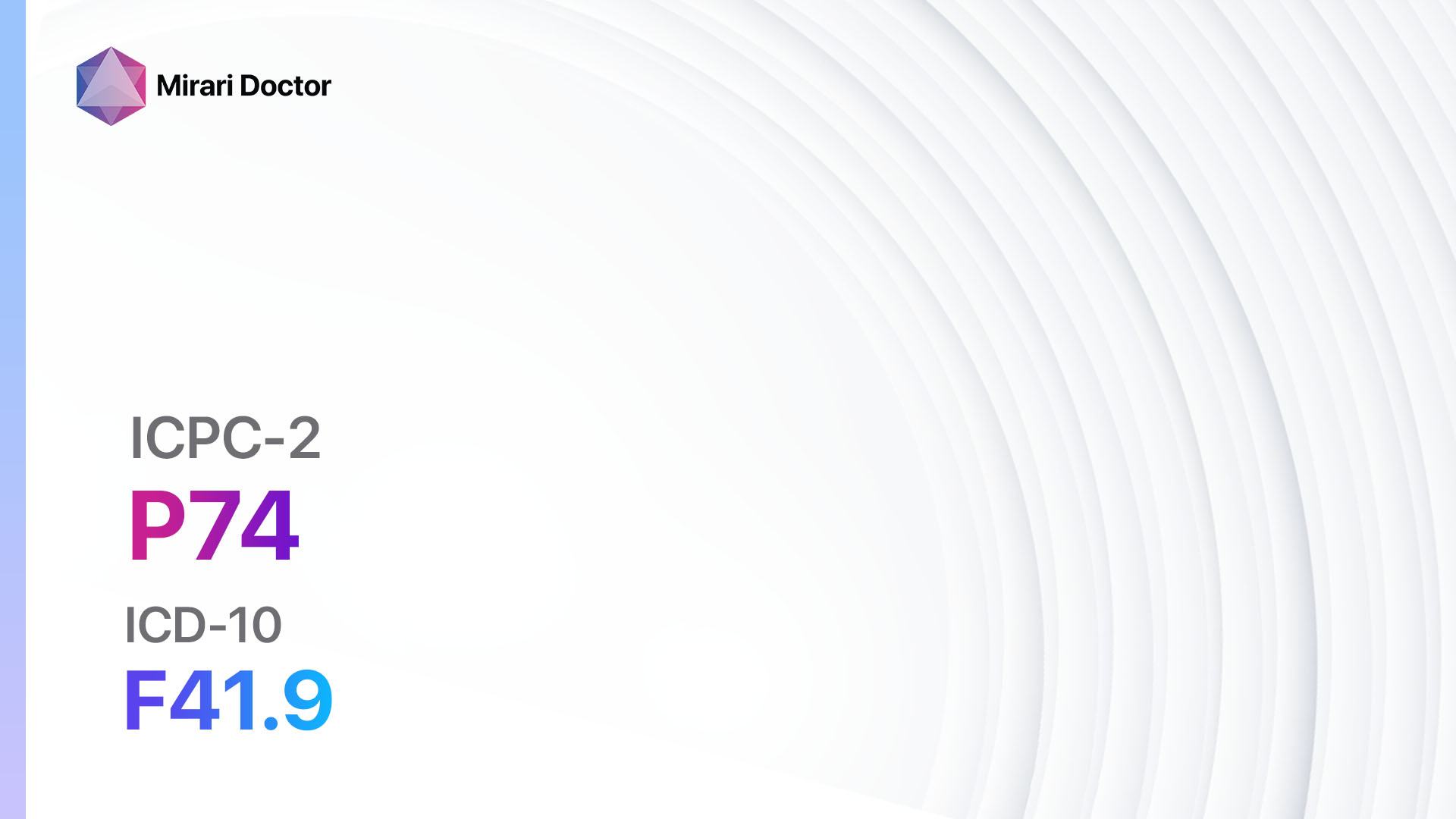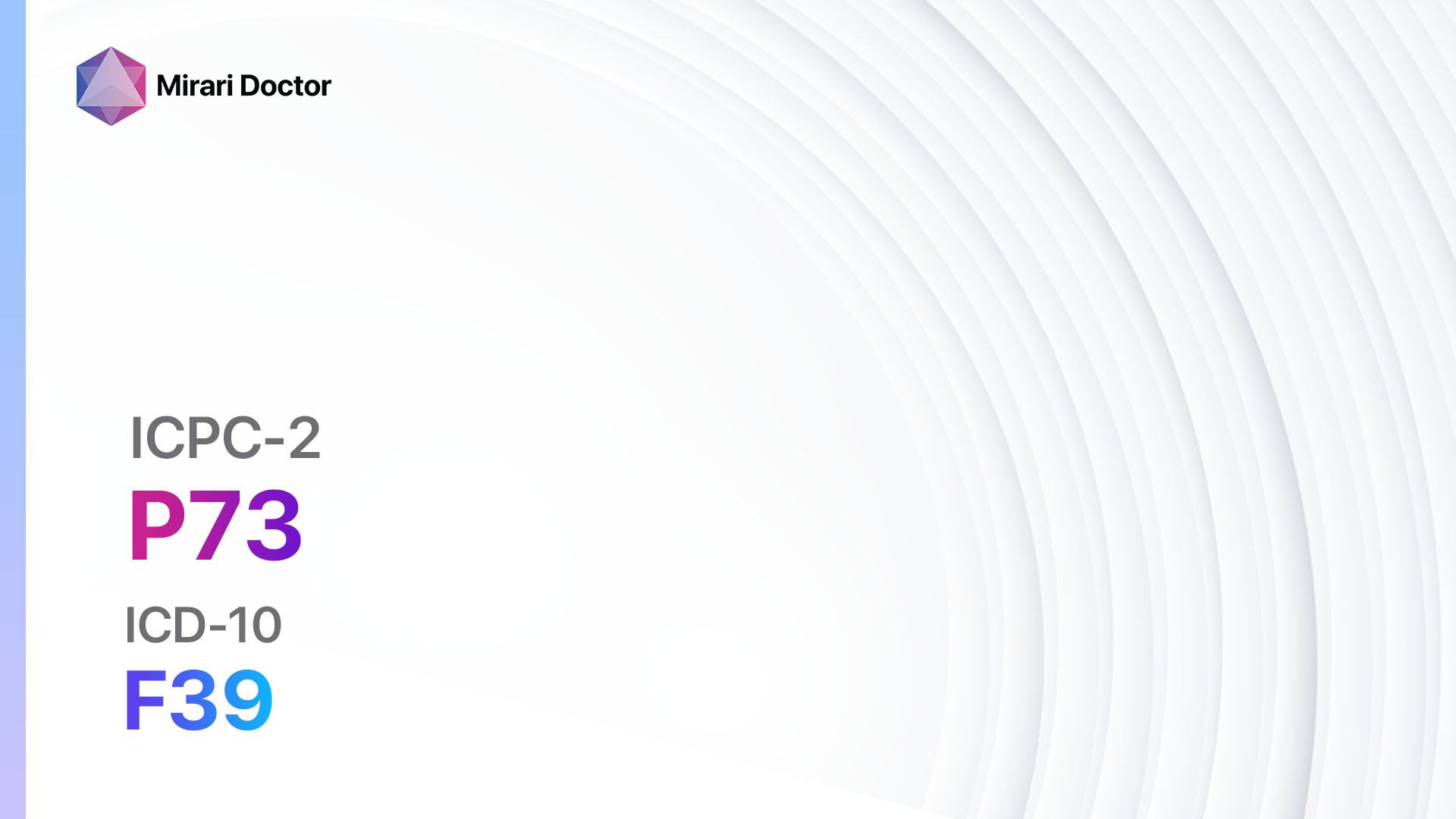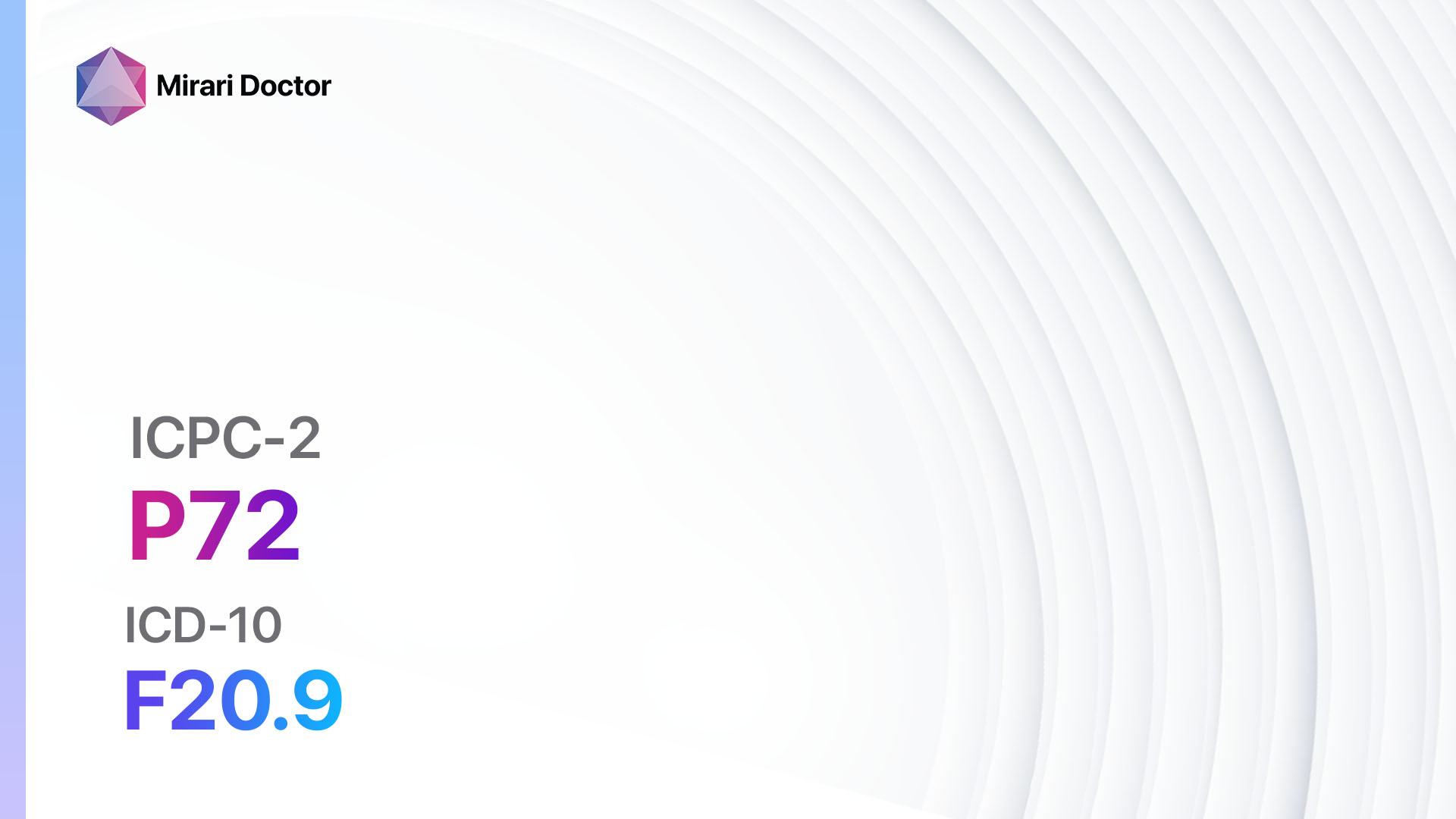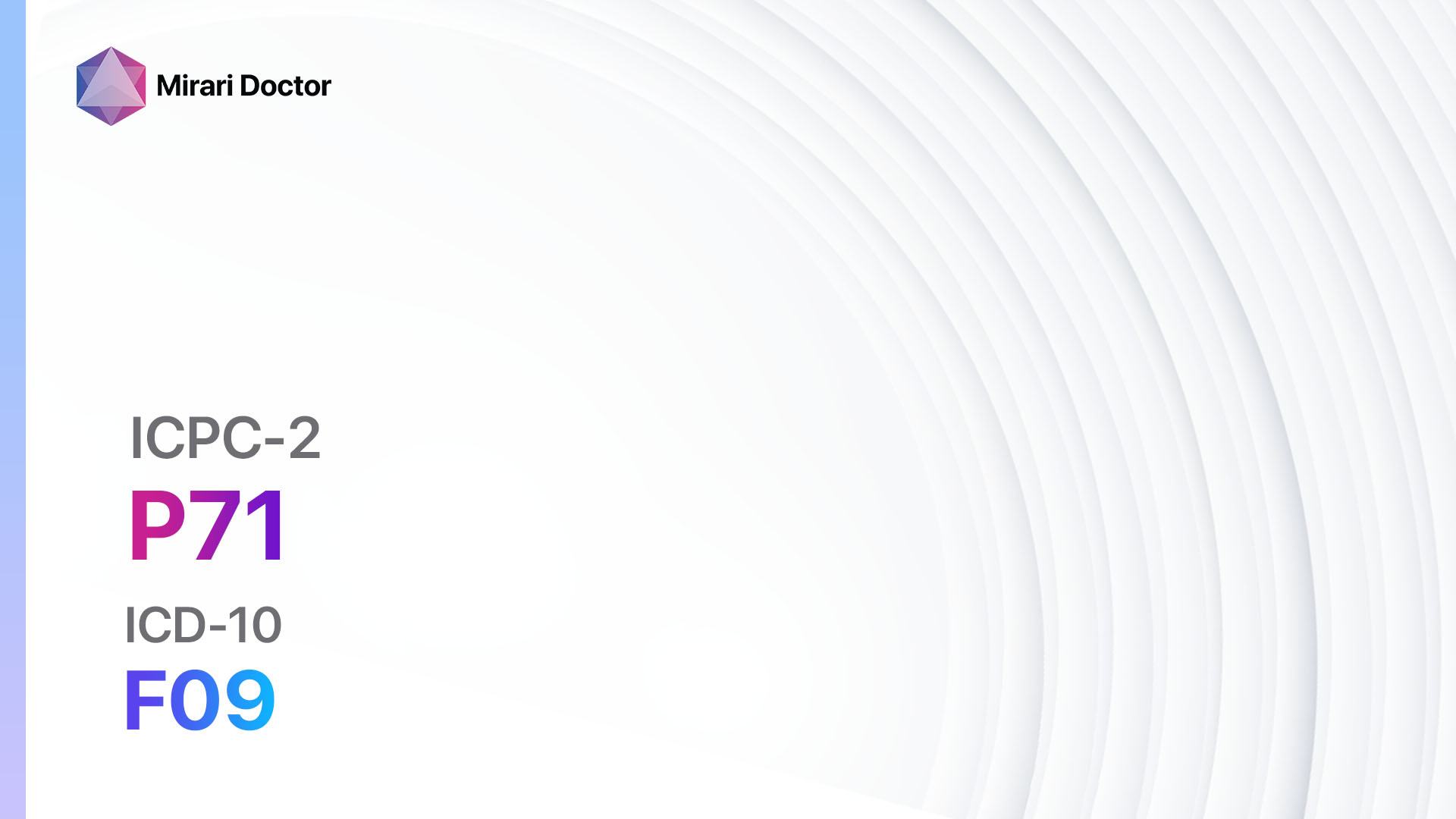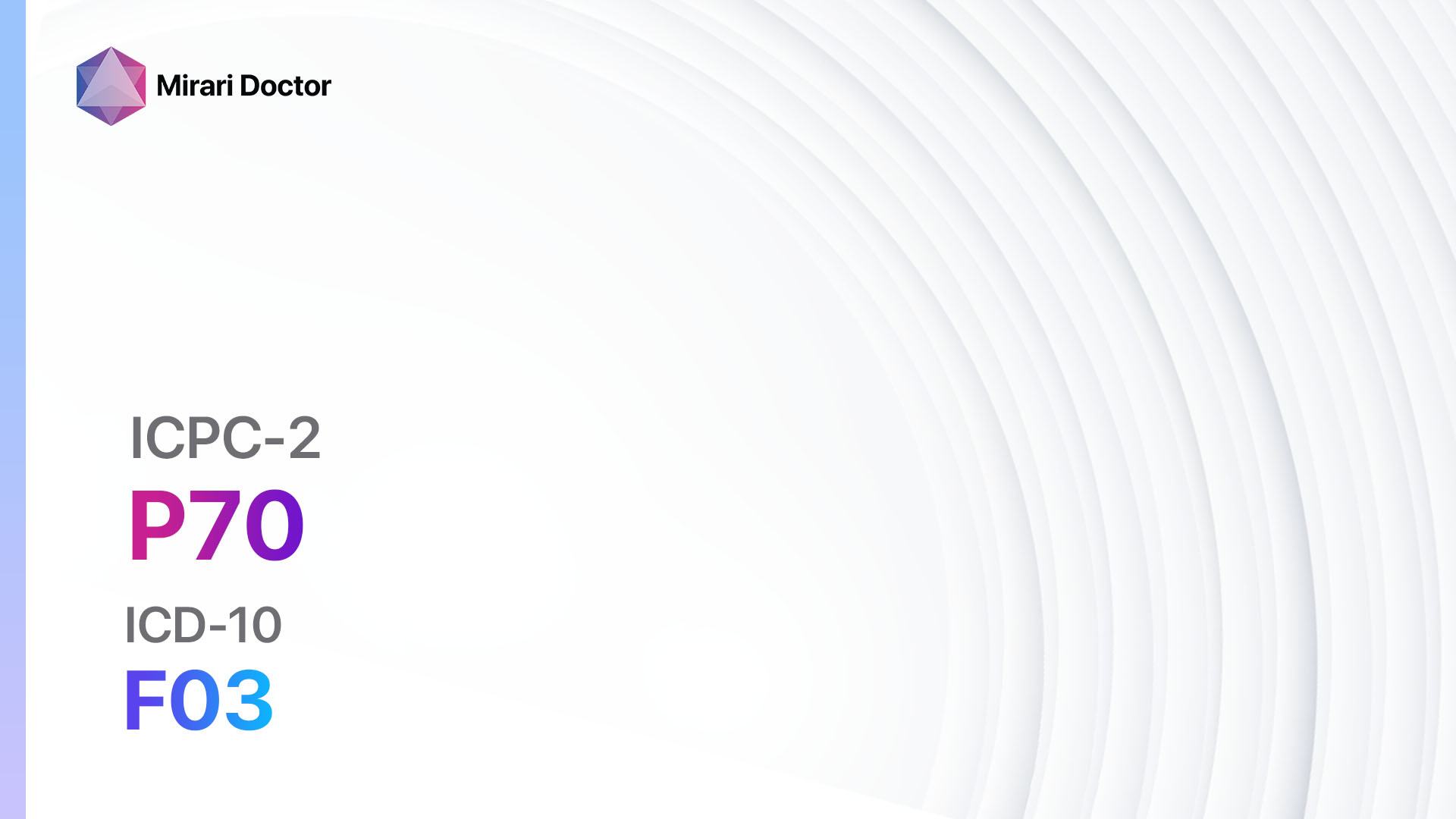
Introduction
Adolescent behavior symptoms and complaints refer to a wide range of behavioral issues that can arise during the adolescent years. These symptoms can include mood swings, irritability, aggression, impulsivity, substance abuse, self-harm, and other behavioral problems[1][2]. It is important to address these symptoms promptly to ensure the well-being and healthy development of adolescents. This guide aims to provide healthcare professionals with a comprehensive approach to diagnosing and managing adolescent behavior symptoms and complaints.
Codes
- ICPC-2 Code: P23 Adolescent behavior symptom/complt.[3]
- ICD-10 Code: F91.9 Conduct disorder, unspecified[4]
Symptoms
- Mood swings: Frequent and extreme changes in mood, ranging from euphoria to depression.
- Irritability: Easily provoked or annoyed, often resulting in angry outbursts.
- Aggression: Physical or verbal hostility towards others.
- Impulsivity: Acting without thinking about the consequences.
- Substance abuse: Engaging in the use of drugs or alcohol.
- Self-harm: Deliberate self-inflicted injury, such as cutting or burning.
- Behavioral problems: Disruptive or antisocial behavior, defiance, or disobedience.[5][6]
Causes
- Hormonal changes: Adolescence is a period of significant hormonal fluctuations, which can contribute to mood swings and behavioral changes.
- Brain development: The prefrontal cortex, responsible for decision-making and impulse control, is still developing during adolescence, leading to impulsive behavior.
- Environmental factors: Family dynamics, peer pressure, school stress, and exposure to violence or trauma can all contribute to behavioral problems in adolescents.
- Mental health disorders: Conditions such as depression, anxiety, bipolar disorder, and conduct disorder can manifest during adolescence and contribute to behavioral symptoms.[7][8]
Diagnostic Steps
Medical History
- Gather information about the patient’s family history of mental health disorders, substance abuse, or behavioral problems.
- Explore the patient’s personal history, including any traumatic experiences, significant life events, or recent changes in behavior.
- Assess the patient’s social environment, including relationships with family, friends, and school.[9]
Physical Examination
- Perform a general physical examination to rule out any underlying medical conditions that may contribute to behavioral symptoms.
- Pay particular attention to signs of substance abuse, self-harm, or physical injuries.[10]
Laboratory Tests
- Blood tests: Screen for any underlying medical conditions, such as thyroid dysfunction or nutritional deficiencies, that may contribute to behavioral symptoms.
- Urine drug screen: Assess for the presence of drugs or alcohol in the patient’s system.
- Toxicology screen: Determine if the patient has been exposed to any toxins or substances that may contribute to behavioral symptoms.
Diagnostic Imaging
- Brain imaging (MRI or CT scan): Consider if there are concerns about structural abnormalities or brain lesions that may be contributing to behavioral symptoms.
Other Tests
- Psychological assessments: Conduct standardized assessments to evaluate the patient’s mental health, cognitive functioning, and personality traits.
- School evaluations: Collaborate with the patient’s school to gather information about academic performance, behavior, and social interactions.
Follow-up and Patient Education
- Schedule regular follow-up appointments to monitor the patient’s progress and adjust treatment as needed.
- Provide education to the patient and their family about the nature of adolescent behavior symptoms, the importance of treatment, and available resources for support.
Possible Interventions
Traditional Interventions
Medications:
Top 5 drugs for Adolescent behavior symptoms/complaints:
- Selective Serotonin Reuptake Inhibitors (SSRIs) (e.g., Fluoxetine, Sertraline):
- Cost: Generic versions can be $4-$30/month.
- Contraindications: Hypersensitivity to SSRIs, concurrent use of monoamine oxidase inhibitors (MAOIs).
- Side effects: Nausea, headache, insomnia.
- Severe side effects: Suicidal thoughts, serotonin syndrome.
- Drug interactions: MAOIs, other serotonergic medications.
- Warning: Increased risk of suicidal ideation in adolescents.
- Stimulants (e.g., Methylphenidate, Amphetamine):
- Cost: Generic versions can be $20-$100/month.
- Contraindications: Cardiovascular disease, glaucoma, hyperthyroidism.
- Side effects: Decreased appetite, insomnia, increased heart rate.
- Severe side effects: Psychosis, cardiovascular events.
- Drug interactions: MAOIs, antihypertensive medications.
- Warning: Potential for abuse and dependence.
- Atypical Antipsychotics (e.g., Risperidone, Aripiprazole):
- Cost: Generic versions can be $10-$200/month.
- Contraindications: Hypersensitivity to antipsychotics, dementia-related psychosis.
- Side effects: Weight gain, sedation, extrapyramidal symptoms.
- Severe side effects: Neuroleptic malignant syndrome, tardive dyskinesia.
- Drug interactions: Other antipsychotics, medications that prolong QT interval.
- Warning: Increased risk of metabolic syndrome and movement disorders.
- Benzodiazepines (e.g., Diazepam, Lorazepam):
- Cost: Generic versions can be $4-$30/month.
- Contraindications: Hypersensitivity to benzodiazepines, sleep apnea.
- Side effects: Sedation, dizziness, impaired coordination.
- Severe side effects: Respiratory depression, dependence.
- Drug interactions: Other central nervous system depressants, opioids.
- Warning: Risk of tolerance, dependence, and withdrawal symptoms.
- Mood Stabilizers (e.g., Lithium, Valproate):
- Cost: Generic versions can be $10-$100/month.
- Contraindications: Renal impairment, pregnancy.
- Side effects: Nausea, tremor, weight gain.
- Severe side effects: Renal toxicity, hepatotoxicity.
- Drug interactions: Other medications that affect renal function, antiepileptic drugs.
- Warning: Regular monitoring of renal and liver function required.
Alternative Drugs:
- Alpha-2 Adrenergic Agonists (e.g., Clonidine): Used off-label for impulsivity and aggression.
- Antidepressants (e.g., Bupropion): Considered for comorbid depression or anxiety.
- Anticonvulsants (e.g., Lamotrigine): May be beneficial for mood stabilization.
- Antipsychotics (e.g., Quetiapine): Used off-label for aggression or psychosis.
- Non-Benzodiazepine Anxiolytics (e.g., Buspirone): Considered for anxiety symptoms.
Therapy:
- Cognitive Behavioral Therapy (CBT): Helps identify and modify negative thought patterns and behaviors.
- Dialectical Behavior Therapy (DBT): Focuses on emotional regulation, distress tolerance, and interpersonal effectiveness.
- Family Therapy: Involves the entire family in addressing and resolving behavioral issues.
- Group Therapy: Provides a supportive environment for adolescents to share experiences and learn coping skills.
- Psychodynamic Therapy: Explores unconscious conflicts and unresolved issues that may contribute to behavioral symptoms.
Surgical Procedures
- There are no surgical procedures indicated for the treatment of adolescent behavior symptoms and complaints.
Alternative Interventions
- Acupuncture: May help reduce stress and promote relaxation. Cost: $60-$120 per session.
- Yoga and Meditation: Can improve emotional well-being and reduce anxiety. Cost: Varies depending on the class or instructor.
- Art Therapy: Provides a creative outlet for self-expression and emotional healing. Cost: $50-$100 per session.
- Equine Therapy: Involves interactions with horses to promote emotional growth and self-awareness. Cost: $100-$200 per session.
- Wilderness Therapy: Outdoor activities and group therapy in a wilderness setting. Cost: $200-$500 per day.
Lifestyle Interventions
- Regular Exercise: Engaging in physical activity can improve mood and reduce stress. Cost: Varies depending on the chosen activity (e.g., gym membership, sports equipment).
- Healthy Diet: A balanced diet rich in fruits, vegetables, and whole grains can support overall well-being. Cost: Varies depending on food choices and dietary restrictions.
- Sufficient Sleep: Adequate sleep is essential for emotional regulation and cognitive functioning. Cost: Varies depending on sleep hygiene practices and bedroom environment.
- Limiting Screen Time: Excessive screen time can negatively impact mental health. Cost: None.
- Supportive Social Environment: Encouraging positive relationships and social support networks. Cost: None.
It is important to note that the cost ranges provided are approximate and may vary depending on the location and availability of the interventions.
Mirari Cold Plasma Alternative Intervention
Understanding Mirari Cold Plasma
- Safe and Non-Invasive Treatment: Mirari Cold Plasma is a safe and non-invasive treatment option for various skin conditions. It does not require incisions, minimizing the risk of scarring, bleeding, or tissue damage.
- Efficient Extraction of Foreign Bodies: Mirari Cold Plasma facilitates the removal of foreign bodies from the skin by degrading and dissociating organic matter, allowing easier access and extraction.
- Pain Reduction and Comfort: Mirari Cold Plasma has a local analgesic effect, providing pain relief during the treatment, making it more comfortable for the patient.
- Reduced Risk of Infection: Mirari Cold Plasma has antimicrobial properties, effectively killing bacteria and reducing the risk of infection.
- Accelerated Healing and Minimal Scarring: Mirari Cold Plasma stimulates wound healing and tissue regeneration, reducing healing time and minimizing the formation of scars.
Mirari Cold Plasma Prescription
Video instructions for using Mirari Cold Plasma Device – P23 Adolescent behavior symptom/complt. (ICD-10:F91.9)
| Mild | Moderate | Severe |
| Mode setting: 2 (Wound Healing) Location: 7 (Neuro system & ENT) Morning: 15 minutes, Evening: 15 minutes |
Mode setting: 2 (Wound Healing) Location: 7 (Neuro system & ENT) Morning: 30 minutes, Lunch: 30 minutes, Evening: 30 minutes |
Mode setting: 2 (Wound Healing) Location: 7 (Neuro system & ENT) Morning: 30 minutes, Lunch: 30 minutes, Evening: 30 minutes |
| Mode setting: 7 (Immunotherapy) Location: 1 (Sacrum) Morning: 15 minutes, Evening: 15 minutes |
Mode setting: 7 (Immunotherapy) Location: 1 (Sacrum) Morning: 30 minutes, Lunch: 30 minutes, Evening: 30 minutes |
Mode setting: 7 (Immunotherapy) Location: 1 (Sacrum) Morning: 30 minutes, Lunch: 30 minutes, Evening: 30 minutes |
| Mode setting: 7 (Immunotherapy) Location: 1 (Sacrum) Morning: 15 minutes, Evening: 15 minutes |
Mode setting: 7 (Immunotherapy) Location: 1 (Sacrum) Morning: 30 minutes, Lunch: 30 minutes, Evening: 30 minutes |
Mode setting: 7 (Immunotherapy) Location: 1 (Sacrum) Morning: 30 minutes, Lunch: 30 minutes, Evening: 30 minutes |
| Total Morning: 45 minutes approx. $7.50 USD, Evening: 45 minutes approx. $7.50 USD |
Total Morning: 90 minutes approx. $15 USD, Lunch: 90 minutes approx. $15 USD, Evening: 90 minutes approx. $15 USD, |
Total Morning: 90 minutes approx. $15 USD, Lunch: 90 minutes approx. $15 USD, Evening: 90 minutes approx. $15 USD, |
| Usual treatment for 7-60 days approx. $105 USD – $900 USD | Usual treatment for 6-8 weeks approx. $1,890 USD – $2,520 USD |
Usual treatment for 3-6 months approx. $4,050 USD – $8,100 USD
|
 |
|
Use the Mirari Cold Plasma device to treat Adolescent behavior symptom/complt. effectively.
WARNING: MIRARI COLD PLASMA IS DESIGNED FOR THE HUMAN BODY WITHOUT ANY ARTIFICIAL OR THIRD PARTY PRODUCTS. USE OF OTHER PRODUCTS IN COMBINATION WITH MIRARI COLD PLASMA MAY CAUSE UNPREDICTABLE EFFECTS, HARM OR INJURY. PLEASE CONSULT A MEDICAL PROFESSIONAL BEFORE COMBINING ANY OTHER PRODUCTS WITH USE OF MIRARI.
Step 1: Cleanse the Skin
- Start by cleaning the affected area of the skin with a gentle cleanser or mild soap and water. Gently pat the area dry with a clean towel.
Step 2: Prepare the Mirari Cold Plasma device
- Ensure that the Mirari Cold Plasma device is fully charged or has fresh batteries as per the manufacturer’s instructions. Make sure the device is clean and in good working condition.
- Switch on the Mirari device using the power button or by following the specific instructions provided with the device.
- Some Mirari devices may have adjustable settings for intensity or treatment duration. Follow the manufacturer’s instructions to select the appropriate settings based on your needs and the recommended guidelines.
Step 3: Apply the Device
- Place the Mirari device in direct contact with the affected area of the skin. Gently glide or hold the device over the skin surface, ensuring even coverage of the area experiencing.
- Slowly move the Mirari device in a circular motion or follow a specific pattern as indicated in the user manual. This helps ensure thorough treatment coverage.
Step 4: Monitor and Assess:
- Keep track of your progress and evaluate the effectiveness of the Mirari device in managing your Adolescent behavior symptom/complt.. If you have any concerns or notice any adverse reactions, consult with your health care professional.
Note
This guide is for informational purposes only and should not replace the advice of a medical professional. Always consult with your healthcare provider or a qualified medical professional for personal advice, diagnosis, or treatment. Do not solely rely on the information presented here for decisions about your health. Use of this information is at your own risk. The authors of this guide, nor any associated entities or platforms, are not responsible for any potential adverse effects or outcomes based on the content.
Mirari Cold Plasma System Disclaimer
- Purpose: The Mirari Cold Plasma System is a Class 2 medical device designed for use by trained healthcare professionals. It is registered for use in Thailand and Vietnam. It is not intended for use outside of these locations.
- Informational Use: The content and information provided with the device are for educational and informational purposes only. They are not a substitute for professional medical advice or care.
- Variable Outcomes: While the device is approved for specific uses, individual outcomes can differ. We do not assert or guarantee specific medical outcomes.
- Consultation: Prior to utilizing the device or making decisions based on its content, it is essential to consult with a Certified Mirari Tele-Therapist and your medical healthcare provider regarding specific protocols.
- Liability: By using this device, users are acknowledging and accepting all potential risks. Neither the manufacturer nor the distributor will be held accountable for any adverse reactions, injuries, or damages stemming from its use.
- Geographical Availability: This device has received approval for designated purposes by the Thai and Vietnam FDA. As of now, outside of Thailand and Vietnam, the Mirari Cold Plasma System is not available for purchase or use.
References
- Zahrt DM, Melzer-Lange MD. Aggressive behavior in children and adolescents. Pediatr Rev. 2011;32(8):325-332. doi:10.1542/pir.32-8-325
- Winters DE, Fukui S, Leibenluft E, Hulvershorn LA. Improvements in Irritability with Open-Label Methylphenidate Treatment in Youth with Comorbid Attention Deficit/Hyperactivity Disorder and Disruptive Mood Dysregulation Disorder. J Child Adolesc Psychopharmacol. 2018;28(5):298-305. doi:10.1089/cap.2017.0124
- World Organization of Family Doctors (WONCA). International Classification of Primary Care, Second edition (ICPC-2). Oxford University Press; 1998.
- World Health Organization. The ICD-10 Classification of Mental and Behavioural Disorders: Clinical Descriptions and Diagnostic Guidelines. World Health Organization; 1992.
- Benarous X, Raffin M, Bodeau N, et al. Adverse Childhood Experiences Among Inpatient Youths With Severe and Early-Onset Psychiatric Disorders: Prevalence and Clinical Correlates. Child Psychiatry Hum Dev. 2017;48(2):248-259. doi:10.1007/s10578-016-0661-4
- Althoff RR, Verhulst FC, Rettew DC, Hudziak JJ, van der Ende J. Adult outcomes of childhood dysregulation: a 14-year follow-up study. J Am Acad Child Adolesc Psychiatry. 2010;49(11):1105-1116. doi:10.1016/j.jaac.2010.08.006
- Kessler RC, Angermeyer M, Anthony JC, et al. Lifetime prevalence and age-of-onset distributions of mental disorders in the World Health Organization’s World Mental Health Survey Initiative. World Psychiatry. 2007;6(3):168-176.
- Merikangas KR, He JP, Burstein M, et al. Lifetime prevalence of mental disorders in U.S. adolescents: results from the National Comorbidity Survey Replication–Adolescent Supplement (NCS-A). J Am Acad Child Adolesc Psychiatry. 2010;49(10):980-989. doi:10.1016/j.jaac.2010.05.017
- Siu AL; US Preventive Services Task Force. Screening for Depression in Children and Adolescents: US Preventive Services Task Force Recommendation Statement. Pediatrics. 2016;137(3):e20154467. doi:10.1542/peds.2015-4467
- Brent DA, Perper JA, Moritz G, et al. Psychiatric risk factors for adolescent suicide: a case-control study. J Am Acad Child Adolesc Psychiatry. 1993;32(3):521-529. doi:10.1097/00004583-199305000-00006
Related articles
Made in USA


